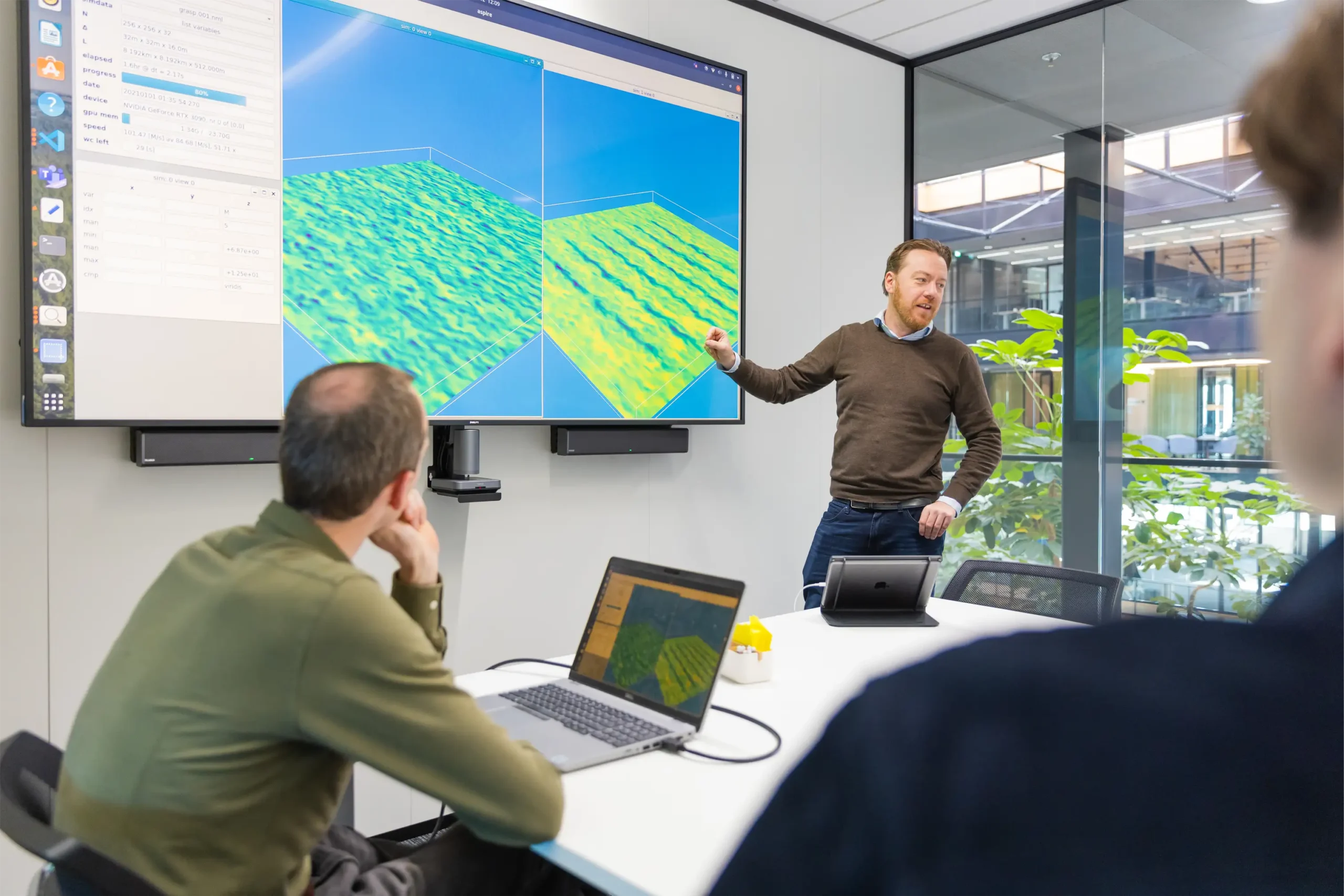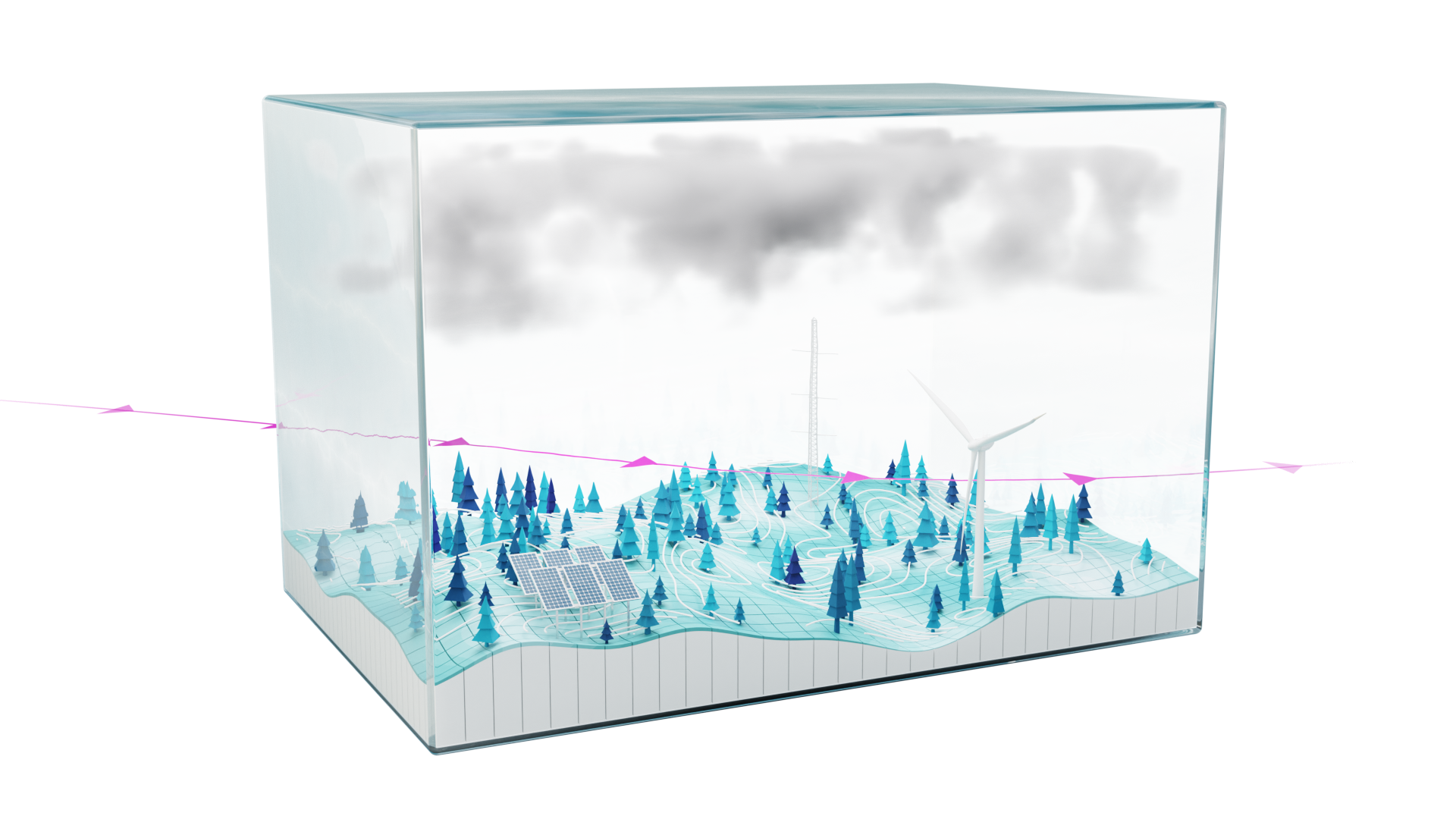Our technology
Whiffle’s weather modeling technology is at the forefront of numerical weather prediction. Utilizing high-resolution, full-physics, Large-Eddy Simulation (LES) technology, we deliver precise weather data for any location in the world.

Atmospheric Large-Eddy Simulation
Large-Eddy simulation (LES) is a computational technique that divides the atmosphere into a grid of boxes of around 100 meter big, and then solves the equations of atmospheric physics on this grid. In this way, LES mimics physical reality, and produces a simulation of the weather in all its complexity. Whiffle’s LES technology has the potential to deliver benefits in many economic sectors, but our primary focus has been on renewable energy.

How it works
Originally developed to study stylized weather scenarios in detail, LES has evolved significantly. By coupling our LES with large-scale weather models, we can simulate any type of weather in any location, earning it the name Atmospheric LES. This high-resolution approach allows small-scale phenomena like turbulence and small clouds to naturally emerge and interact realistically with local details, such as topography. Traditional weather models, with their larger grid boxes (around 10 km), cannot achieve this level of detail.
Full-physics simulation
High resolution
(~ 100m)
Run on supercomputing platforms
Coupling to large-scale weather models
Includes turbines in simulations
The high resolution and accurate representation of turbulence make LES the perfect tool for simulating wind farms. By incorporating wind turbines as actuator disk into the LES, we can calculate power production and the interactions (wakes, blockage) between turbines and the atmosphere, as well as between turbines themselves. By coupling the LES to large-scale weather models, it enables us to produce turbine level predictions for yield modelling (using ERA5) and power forecasting (using ECMWF IFS).
Whiffle's LES model
Real-weather LES isn’t limited to wind. Whiffle’s LES model produces detailed simulations for any weather variable. Therefore, Whiffle’s LES is also used for applications such as solar irradiance and dispersion modeling.
Visualization of clouds (left) and wind speed at 100m height (right) of a Large-Eddy Simulation by Whiffle’s LES model, run over the North Sea with100GW wind installed. The run was done for the WINS50 project, see wins50.nl for more information
Features
Fast and economical
Running on GPUs, our LES can simulate large areas (the size of small countries) and long periods (up to a year) efficiently.
Advanced coupling
Integrated with ECMWF’s IFS or ERA5, and high-resolution land surface datasets.
Comprehensive physical processes
Beyond the Navier-Stokes equations for airflow, our LES includes modules for radiation, microphysics (rain/snow), and dispersion.
Atmospheric LES
For wind farms, LES eliminates the need for assumptions about blockage, wakes, and other effects, as these phenomena naturally emerge from the laws of physics in our simulations.
Solutions
Whiffle’s weather model is the ultimate all-in-one solution, providing comprehensive insights in these four main solution areas.
- Meteo forecast
- Power forecast
- Wind resource modelling
- Energy yield modelling

Explore
Want to learn more about our technology? We are glad to share our knowledge and experience with you. Take a deep dive into our technical articles and papers written by our scientists.